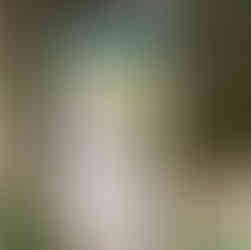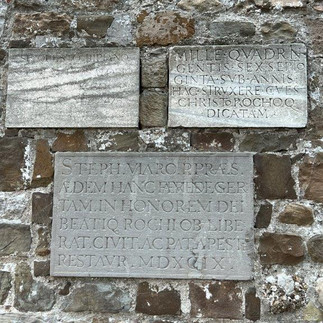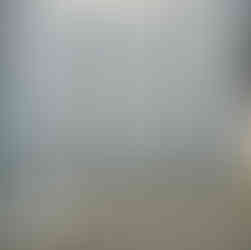Castello (Castle) di Udine
- Maria Scuor
- Jun 2, 2022
- 4 min read
Updated: Aug 22, 2022
L'italiano è appena sotto l'inglese in blu - Scusa si ci sono errori (Italian translations just under English in blue)
As a boy, Gianni walked the hills of the Castello di Udine with his mom. Every time we go to Udine, a walk up the hill is a must because the scenery and history is plentiful, beautiful and serene.
Gianni, da raggazzo, ha camminato tante volte sulle colline del Castello di Udine con sua madre. Ogni volta che andiamo a Udine, una passeggiata in collina è d'obbligatoria perché il paesaggio e le storie sono molte, belle e sereni.
Here are some beautiful photos of our walk to get up and down from the Castello and it's surroundings:
Ecco delle bellissime foto che abbiamo scattato salendo e scendendo dal Castello:
Il Castello is one of the main monuments in Udine and stands 138 meters above the historic center of the city. The first settlements date back to the bronze ages and in the 6th century the first Christian building devoted to Mary was built. It is classified the oldest sacred building in Udine. In the 8th century the original Church to Santa Maria was built in the Roman architecture.
It remained a parish until 1263 when the the Patriarch of Aquilela transferred its function to the Church of St. Ordorico, now a Cathedral. in the middle of the 15th century, Santa Maria was restored and given a sacristy (a room in a church where a priest prepares for a service, and where vestments and articles of worship are kept). The church as Il Castello was damaged in the massive Earthquake of 1511.
The churches 16th century bell tower stands 43 meters high and dominates the vast Friuli plain. It is surmounted by the revolving angel, which is the symbol of Udine and Friuli. It is believed the bell tower was erected in place of one of the lookout towers. The construction, worked on by Gaspare Negro, was suspended in 1511 and resumed in 1539 when Giovanni da Udine completed the belfry, the tambour and the hemispherical dome.
Il Castello è uno dei principali monumenti di Udine e si erge a 138 metri sopra il centro storico della città. Durante l'età del bronzo, i primi colonie costruirono un edificio cristiano dedicato a Maria. Questo edificio è classificata il più antico edificio sacro di Udine. Poi nell'VIII secolo hanno costruita la Chiesa "Santa Maria" in architettura romana.
La chiesa è rimasta parrocchia fino al 1263 quando il Patriarca di Aquilela ha trasferito la sua funzione alla Chiesa di S. Ordorico, oggi è una Cattedrale. A metà del XV secolo, la Chiesa di Santa Maria è stata rinnovata e aveva una sagrestia. La chiesa come Il Castello sonno danneggiato nel terremoto del 1511.
Il campanile cinquecentesco delle chiese è 43 metri alto e domina la vasta pianura friulana. È sormontato dall'angelo girevole, simbolo di Udine e del Friuli. Si ritiene che il campanile sia stato eretto al posto di una delle torri di vista. La costruzione, curata da Gaspare Negro, era sospesa nel 1511 e ripreso nel 1539 quando Giovanni da Udine ha compleso il campanile, il tamburo e la cupola semisferica.
Here are some of my photos of this historical church on Udine hill:
Ecco delle bellissime foto che abbiamo scattato di questa storica chiesa sul colle di Udine:
This Castello stands in place of the original fortress that was built by the Patriarchs of Aquileia (Bishops and Archbishops) in 1222 and as the church it was destroyed in the earthquake of 1511. There is a legend regarding this hill that I have to share because it is so interesting.
Taken from Wikipedia "The origin of Castello hill has significant history on the Friulian plain, and was until recently believed to be due to the accumulation of debris over the centuries. However, there is a legend that has been handed down for centuries about its origin: it is said that when Attila in 452 captured Aquileia , at the time one of the largest cities of the Roman Empire. He did this to enjoy the show from Udine and therefore ordered his soldiers to build it a rise. It is said this was done by filling the helmets of each soldier with earth, which were then thrown into an open space in the center of the citadel to give rise to the hill that today dominates the city."
Recently (April 2022) archaeological studies have shown the hill is much older than the legend supposes . According to these studies, it was built in the pre-Roman age, between 3500 and 3000 years ago, in the Bronze Age. Either way this hill is very old!
Continuing with the Castello, building this structure began in 1517 and took over 50 years to complete. Giovanni di Udine completed the last phase of the construction. Il Castello is now home to Civic Museums, the archaeological and numismatic museum, the Italian Revolution museum and the Friulian Museum of photography, a photo library with over 150,000 images and a character library university with over 30,000 volumes.
Questo Castello sorge al posto dell'originaria fortezza che è stato costruitodai Patriarchi di Aquileia nel 1222. Come la chiesa il castello fu distrutto dal terremoto del 1511. C'è una leggenda riguardo a questa collina che devo condividere perché è così interessante.
Tratto da Wikipedia “C'è però una leggenda che si tramanda da secoli sulla sua origine: si narra che quando Attila nel 452 saccheggiò Aquileia, al tempo una delle più grandi città dell'impero romano, per godersi lo spettacolo da Udine, ordinò ai suoi soldati di costruirgli un'altura. Ciò fu fatto riempiendo di terra gli elmi di ogni soldato, che buttata tutta in uno spiazzo al centro della cittadella diede origine al colle che oggi domina la città.
Proseguendo con il Castello, la costruzione di questa struttura iniziò nel 1517 e ci vollero oltre 50 anni per essere completata. Giovanni di Udine ha completato l'ultima fase della costruzione. Il Castello è oggi sede dei Musei Civici, del Museo Archeologico e Numismatico, del Museo della Rivoluzione Italiana e del il Museo Friulano della Fotografia, una Fototeca con oltre 150.000 immagini e una Biblioteca di carattere universitario con oltre 30.000 volumi.
Here is a video I took at the top of the Castello and below are photo's Gianni and I took:
Ecco un video che ho fatto in cima al Castello e sotto ci sono le foto che io e Gianni abbiamo scattato:




















































































Comments